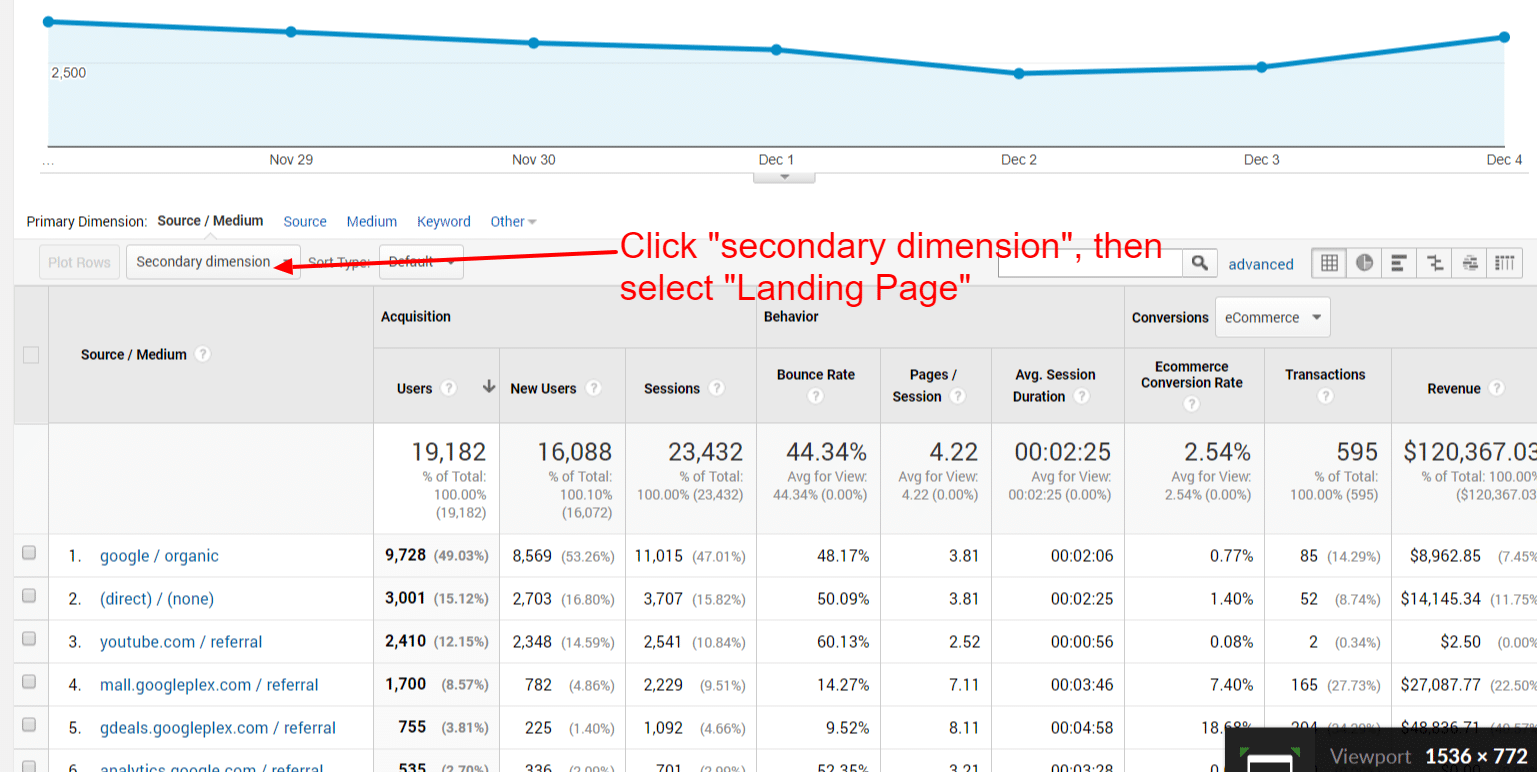Enhance Your Information Evaluation Using Secondary Dimension in Google Analytics
Checking out the abilities of additional dimensions in Google Analytics opens up a world of possibilities for refining information evaluation. The capability to dissect details further past the surface level presents a nuanced sight that can shape strategic decisions. By layering added dimensions onto primary information collections, a more intricate story emerges, clarifying individual communications and performance indications. This dynamic method to information exam holds the crucial to unlocking hidden patterns and trends that might transform just how services interpret their digital footprint.
Comprehending Secondary Measurements
In the realm of information evaluation, a critical element to understanding is the idea of secondary dimensions and their value in drawing out much deeper understandings from Google Analytics reports. Additional dimensions in Google Analytics describe added specifications that can be contributed to the main measurement, enabling an extra thorough analysis of data. By integrating additional dimensions, analysts can sector and filter information to uncover patterns, patterns, and correlations that may not appear when checking out the data all at once. These second measurements can offer context and a much more comprehensive understanding of customer behavior, web traffic resources, and various other key metrics tracked by Google Analytics.

Benefits of Using Additional Measurements
When evaluating data in Google Analytics, the application of additional measurements offers important insights into individual actions and efficiency metrics. By including an additional dimension to your key information, you can dive deeper into the characteristics of your website visitors and their interactions.
Additionally, additional measurements improve the context of your main data, offering a more comprehensive sight of customer interaction and performance metrics. On the whole, the use of second dimensions in Google Analytics can substantially improve the depth and high quality of your data analysis, leading to even more informed decision-making and enhanced results.
How to Add Second Measurements
By integrating additional dimensions in Google Analytics, users can gain much deeper insights right into their information evaluation process, permitting for even more comprehensive assessment of user actions and performance metrics. Adding secondary dimensions is an uncomplicated procedure that can considerably improve the depth of evaluation. To add an additional dimension in Google Analytics, begin by browsing to the report you intend to evaluate. As soon as in the report, find the "Additional dimension" tab over the information table. Click on it to reveal a dropdown menu with numerous options such as Actions, Modern Technology, and Custom-made Dimensions. Select the dimension you intend to include, such as 'Source/Medium' or 'Device Classification'. This secondary dimension will after that be put on your existing data, giving extra context and enabling for an extra comprehensive evaluation of individual interactions. By using second dimensions successfully, individuals can discover valuable understandings that may have otherwise been forgotten, leading to notified decision-making and improved performance methods.
Studying Information With Additional Measurements
Utilizing additional dimensions in information evaluation offers a much more comprehensive understanding of individual habits and efficiency metrics. By adding an additional dimension to your main data set in Google Analytics, you can dive much deeper right into the features of your internet site visitors and their interactions. As an example, incorporating the main dimension of 'source/medium' with the secondary dimension of 'touchdown web page' can disclose which certain pages are attracting traffic from various resources, helping you maximize these web pages for better engagement.

Fundamentally, analyzing data with second dimensions encourages you to acquire valuable understandings into customer habits, determine trends, and make educated decisions to boost the performance of your electronic homes.
Ideal Practices for Additional Dimensions
In data analysis, including additional measurements successfully can substantially enhance the depth of insights originated from metrics and individual actions patterns. When making use of second measurements in Google Analytics or any type of other analytical device, site here it is vital to follow finest techniques to make sure the precision and relevance of the data evaluation.
One trick best method is to very carefully select second dimensions that complement the main measurement being assessed. Choosing secondary measurements that supply added context or more segmentation can use a more detailed understanding of the information. It is additionally vital to avoid overcomplicating the evaluation by consisting of a lot of additional dimensions, which may cause complication or dilution of understandings.
Additionally, it is a good idea to explore various combinations of second and key measurements to uncover new connections and patterns. Regularly refining the selection and reviewing of additional measurements based on the particular goals of the analysis can lead to even more workable insights. By complying with these best practices, information experts can take advantage of second dimensions successfully to improve the overall information evaluation procedure and decision-making abilities.

Verdict
In conclusion, incorporating secondary dimensions in Google Analytics is necessary for a thorough data analysis method. By leveraging secondary measurements alongside primary ones, experts and marketers can discover important insights and relationships that can notify decision-making and optimize electronic advertising and marketing methods. Comprehending exactly how to successfully use secondary measurements and adhering to ideal techniques will allow professionals to draw out meaningful information and improve their overall performance metrics.
Additional dimensions in Google Analytics refer to added parameters that can be included to the key measurement, allowing for an extra in-depth analysis this of data. By integrating additional measurements, experts can section and filter data to reveal patterns, patterns, and correlations that may not be noticeable when looking at the information as a whole. Combining the key dimension of 'source/medium' with the second measurement of 'landing web page' can reveal which details web pages are bring in traffic from various sources, assisting you enhance these pages for far better engagement.
One secret ideal technique is to meticulously select additional dimensions that match the main measurement being evaluated. By adhering to these best techniques, information experts can leverage additional dimensions effectively to boost the overall data evaluation procedure and decision-making capacities.